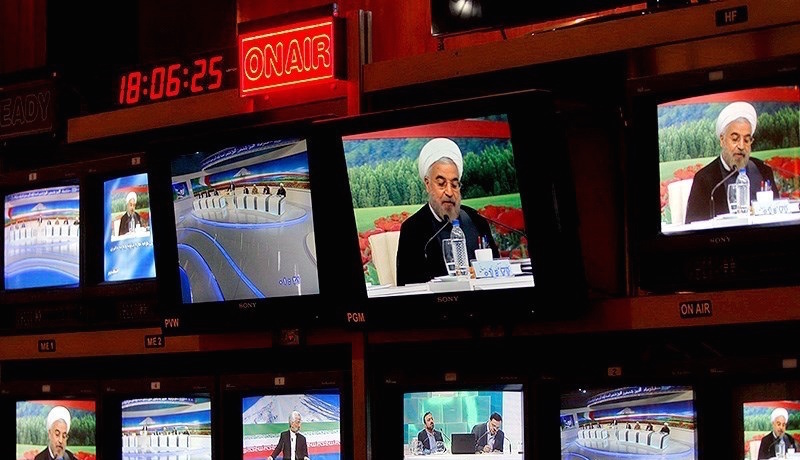Political judgment day in Iran is fast approaching — and word on the street is that the mud-slinging between sitting centrist president Hassan Rouhani and his hardline contender Ebrahim Raisi, the two front-runners of Iran’s presidential election this Friday, has never looked so grimy.
Three live televised presidential debates saw the six candidates (now dropped to four) come prepared with evidence of fraudulent activity — blown-up screen-shots, graphs and newspaper clippings highlighting gross government spending on cabinet minister salaries and unauthorized purchases of large assets were watched by millions of viewers and circulated via social media.
Raisi, who is believed to be one of several beaurocrats quietly groomed as a successor to 77-year-old Ayatollah Ali Khamenei, has been at the forefront of corruption and economic mismanagement claims against Rouhani. Some say it’s a plausible argument. “Rouhani based his entire first term on the Iran nuclear deal as a magic pill which would solve all of the country’s economic problems,” says one Tehran-based journalist. “Not only has that not happened, some find themselves in a worse economic situation than before. The rich have gotten richer, proven by the influx of luxury items, while the poor have had to make do with stagnant salaries, if employed at all.
“Rouhani has tried to put the blame for this on the effects of the Ahmadinejad administration’s mismanagement,” he adds. “But after four years in power, no one is really buying that argument.”
It doesn’t help that many cabinet ministers around him have become rich as civil servants; the public perception being that they have amassed so much wealth that it prevents them from taking care of issues pertaining to government.
“The fact that an unknown person like Mr. Raisi can mobilize relatively large numbers of people shows the seriousness of the economic situation that the country is facing,” notes Mohammad Marandi, a professor of English literature at the University of Tehran. “If he is elected, he is going to have change the way he conducts his presidency.”
The fierceness of the debate has alarmed some Iranians. “It worries me,” says Iranian-Canadian Farhad Souzanchi, who has been closely following the elections through an election monitoring site he built called YekRay [One Vote]. “It reminds me of the 2009 election when many journalists ended up in prison. Looking from the outside at the way the election is going — the atmosphere then was like this too….especially during the last day. There was a lot of passion — and each side viewed the other as a threat.”
The 2009 re-election of conservative President Mahmoud Ahmadinejad was marred by fraud and protests. Three leaders from the reformist Green Movement remain under house arrest without charge since 2011.
Some uncanny similarities also exist between Raisi and Ahmadinejad. It’s telling that while Rouhani campaigns on a platform of “freedom, security and progress,” Raisi’s platform echoes the very issues that helped Ahmadinejad win his first presidency in 2005: Fighting corruption, helping the poor and showing a stronger face to western powers. His campaign team is also largely made up of former ministers who served under Ahmednijad.
Perhaps even more disconcerting is the fact that Raisi’s former political experience is tied to a time when he served as one of four judges that oversaw the execution of thousands of political prisoners in 1988.
The 1988 executions are a deeply taboo subject within Iran — virtually no public discussion of it exists except on social media and foreign news outlets. During a campaign rally last week though, Rouhani broke the ice — through a thinly veiled reference to “those people who only have execution and imprisonment in their background.”
But he saved his harshest words for one of his final campaign rallies in the shrine city of Mashad on Wednesday. “This is a choice between war and peace,” he declared to thousands of supporters. “A mistake in who we elect as President will mean war.”
Whatever the outcome, one notion needs to be acknowledged in the Western narrative of Iranian politics: Amidst all the mocking critiques over an electoral system that screens candidates, disqualifies leading reformists from running and often deemed essentially futile because of a supreme leader who sits on top with the final say — a form of democracy and dissent does exist.
Iran’s presidents set the tone in shaping the country’s foreign and domestic policy for years to come. A cursory glance at Tehran’s starkly different leaders over the last 15 years — including a nuclear deal that no one thought would actually transpire — speaks to this better than anything else.
This post also appears on The Islamic Monthly.
Image: Wikimedia Commons/Mahdi Dehghan
Like this article? Please chip in to keep stories like these coming.





